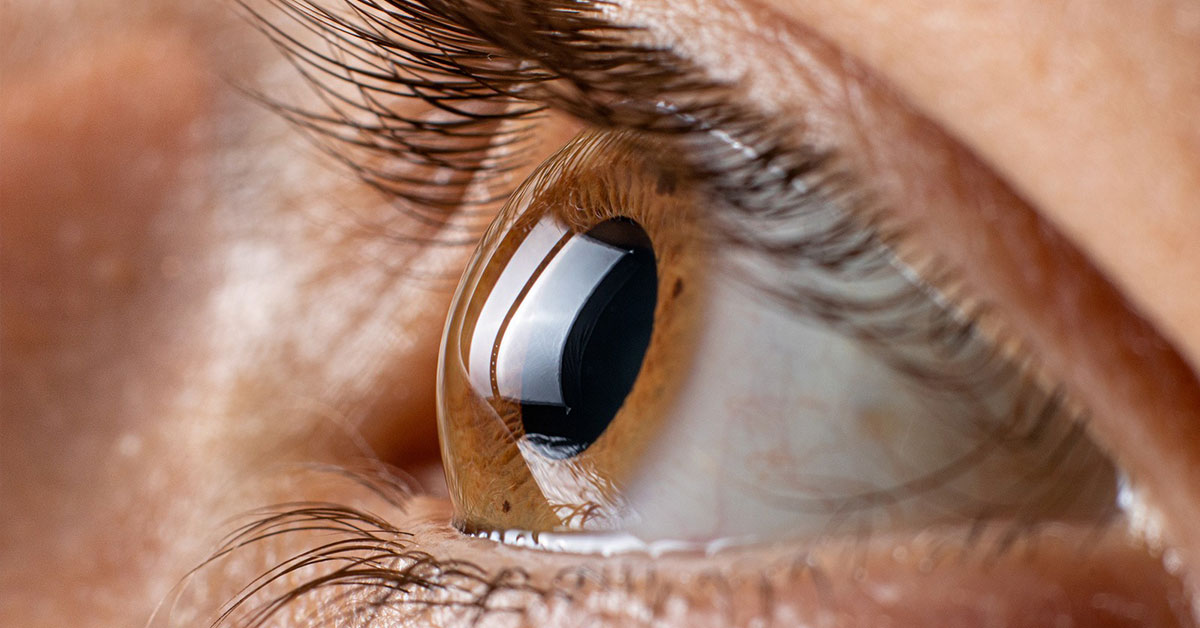Keratoconus
WHAT IS KERATOCONUS?
Keratoconus is a congenital corneal disease, which is manifested by its gradual thinning and convexity into a conical shape. The cause is the weakening of the corneal tissue. The symptoms of keratoconus are trouble while driving, reading, double or shaded vision.
The disease may be associated with other ocular disorders such as all allergies (atopic eczema), Down or Turner's syndrome and also with the rubbing of the eyes in children. It forms in the period of puberty, the first symptoms include an increase in myopia and astigmatism. The earlier the disease manifest itself, the higher likelihood of its progress and the need to start treatment. Usually both eyes are affected by the keratoconus, but at different rates, and the disease progresses typically only up to the 40th year of life.

TREATMENT OF KERATOKON
Keratoconus cannot be completely cured, treatment can only alleviate or stabilize the disease. We distinguish 5 stages of keratoconus disease:- 1st stage:
In the first stage, patients use spectacle correction, contact lenses. Corneal Cross Linking (CXL) is considered for younger patients who are expected to have rapid disease progression. CXL, through the cross-linking of collagen fibers, leads to a strengthening of the cornea and slows down the progression.
- Stage 2 - 4:
In the following stages of the disease, the implantation of intrastromal corneal rings, the so-called Ferrara rings. Implanted corneal rings will change the structure and topography of the cornea.
- 4th plus stage:
This stage is characterized by a last resort, which is a corneal transplant. This solution is used if previous treatment methods are already ineffective or contraindicated.
WHO IS THE SURGERY SUITABLE FOR
The surgery is the right choice for all those with the full outbreak of the disease and treatment with contact lenses not helping. The doctor determines the type of surgery after a careful preoprative examination based on the stage of the disease. Book an appointment today.METHODS OF TREATMENT OF KERATOCONUS
In the iClinic eye clinic, we use two methods of treating keratoconus:
The choice between the CXL keratoconus treatment method and Ferrara corneal rings depends on individual factors such as the severity of the disease, the age of the patient and the overall health of the eyes. The CXL method is suitable for patients with early stages of keratoconus who want to slow down or stop the progression of the disease. Ferrara rings are more suitable for patients with more advanced stages of keratoconus. At iClinic, our experienced ophthalmologists will advise you and recommend the most suitable treatment option based on your condition.
You can find a simple comparison of both treatment methods in this table:
|
Parameter |
CXL method | Corneal rings Ferrara rings |
|---|---|---|
| Suitability | Early stages of keratoconus | Advanced stages of keratoconus |
| The principle | Using UV radiation and vitamin B2 (riboflavin) to strengthen the cornea | Insertion of small, thin implants into the cornea |
| Surgery | Outpatient, local anesthesia | Outpatient, local anesthesia |
| Length of surgery | 45 - 90 minutes | 10 - 30 minutes |
| Convalescence | Several days | Several days |
| Possible side effects | Eye irritation, dry eyes, temporary deterioration of vision, infections | Eye irritation, dry eyes, temporary deterioration of vision, infections |
| Reversibility | yes | yes |
ARE YOU INTERESTED IN A CONSULTATION OR EXAMINATION?
Make an appointment today







